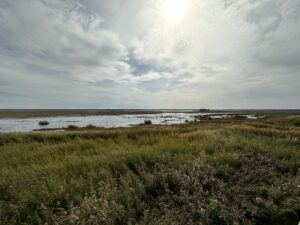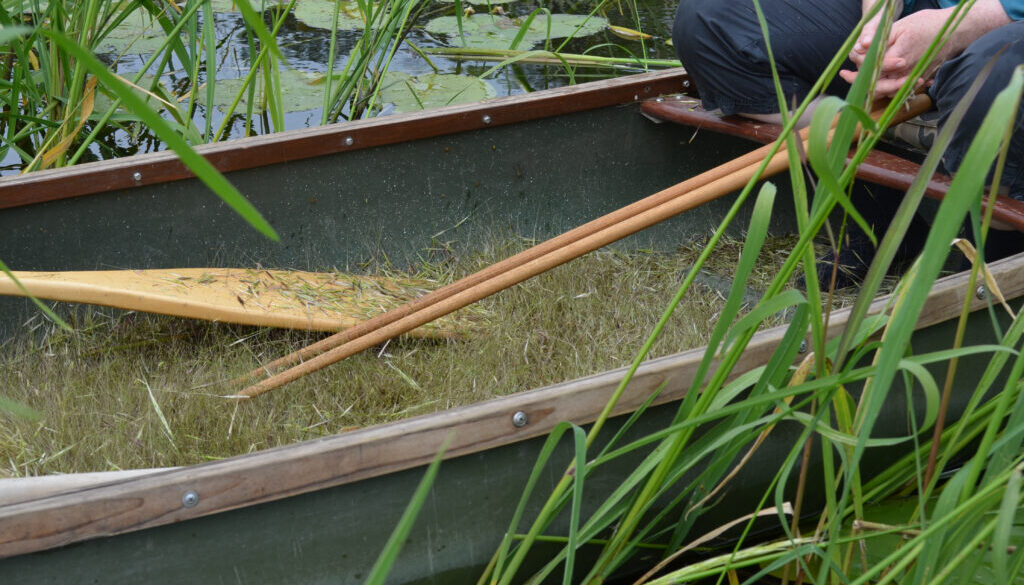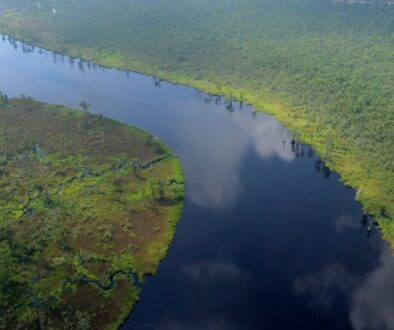Amid Biden push for electric vehicles, debate grows over “green” mining
Minnesota, long known as the Land of 10,000 Lakes, is a heralded haven for people and wildlife alike, a state rich in natural resources.
But now, a nickel mine proposed for northern Minnesota poses a threat to the stability of precious wetland ecosystems, according to critics trying to block the project. Though backers of the mine claim it will be an environmentally friendly operation that provides crucial material for the production of electric vehicle batteries, challengers say the mine could actually create more environmental problems than it will solve.
The battle illustrates one of many challenges arising as the Biden administration pushes for a rapid transition away from fossil fuels and toward so-called clean energy. In May, the Biden Administration paused the environmental review process for an Arizona copper mine in the face of similar concerns from Indigenous tribes about what the mine there might do to water quality.
“We’re not opposed to mining, but we have to ensure that these activities do not endanger our natural environment or our Indigenous communities,” said Kelly Applegate, commissioner of natural resources for the Mille Lacs Band of Ojibwe. A community of Mille Lacs members live near the site designated for the Minnesota mine, which would sit just outside the tiny town of Tamarack.
Developers of the proposed nickel mine — a company called Talon Metals — plan to submit plans to the Minnesota Department of Natural Resources (DNR) later this month, after which a public comment period on the project is expected to open.
Talon Metals states on its website that it is “committed to meaningful consultations with tribal sovereign governments and tribal communities as we continue to explore and develop nickel for the clean energy transition.” The company says it will “protect the natural environment while also producing the vital materials required for the energy transition” and to address climate change.
Projects such as the Tamarack mine are bolstered by the 2022 Inflation Reduction Act (IRA), which offers incentives for consumers to purchase electric vehicles, and for producers to source their materials within the US.
New industrial facilities have been popping up across the country to take advantage of the incentives. In South Carolina, BMW has invested billions to transition a manufacturing plant from making gas vehicles to electric ones, and a Nevada-based battery recycling company announced plans to build a $3.5 billion facility, crediting the IRA as one force behind the decision.
Talon Metals says electric vehicle manufacturer Tesla has already promised to buy at least 165 million pounds of nickel from the mine.
Nickel is increasingly seen as playing an important role in the expansion of electric vehicle use as it can be used to increase an electric vehicle’s “energy density” and overall driving range.
Tribal communities’ concerns
Mining and processing nickel is energy-intensive, and the process of separating nickel from mined rock creates a by-product called mine tailings. Mine tailings contain metals that interact with water to make water more acidic, potentially threatening nearby water quality if the tailings are not properly managed. The mining process itself can also cause similar water quality problems by allowing metals, once contained in underground ore, to interact with surface water, also making the water more acidic. Acidity caused by mining can be intolerable for some plants and animals living in wetland ecosystems.
The site of the proposed northern Minnesota mine is about 1.3 miles away from Round Lake, a community of the Mille Lacs Band of Ojibwe, a federally recognized tribe. The mine site is surrounded by wetlands and a system of lakes and rivers that host culturally-important animals and plants, including wild rice, which is an integral part of the culture of tribes in the region.
“Copper and nickel mining has a track record of producing a lot of pollution. It’s never been proven to be done in a way that doesn’t impact the environment in a negative way. That’s what really has us concerned as the tribal people that require this clean water,” said Applegate.
In particular, sulfuric acid, a by-product of the interaction between fresh water and excavated rocks, could threaten the growth of the wild rice, or manoomin. The plant important for its nutritional value and use in cultural ceremonies. “We cannot have elevated sulfate in our rice. It’s just not an acceptable thing for us,” said Applegate.
In March, the Mille Lacs Band partnered with Earthjustice and the Minnesota Center for Environmental Advocacy to form an advocacy group, called Water Over Nickel. The group hopes to push the Minnesota DNR to give more consideration to community concerns during the permitting process for the mine.
Indigenous communities, such as those living near the site of the proposed Minnesota mine, are at particular risk of impact from such mining operations, according to a report by Earthjustice and the University of Colorado. Researchers found that 97% of nickel, 89% of copper, 79% of lithium and 68% of cobalt reserves and resources in the US are located within 35 miles of Native American reservations.

“Green” nickel mining
Talon Metals has said the company plans to implement a number of environmentally-friendly practices to reduce the risks to water quality and the surrounding ecosystem.
The proposed mine will be an underground mine rather than an open pit surface mine, meaning there will be less rock excavated, and thus less risk that extracted rock will alter water chemistry, according to Todd Malan, a Talon Metals executive.
Talon Metals also plans to deal with mine tailings (a by-product of ore processing) from the processing plant by mixing the tailings with coal ash (a by-product of coal-fired power production) and storing them in a lined, underground impoundment.
The company has said it will use electric vehicles for mining operations, and plans to “explore the carbon storage potential” at the Tamarack site with funding from the US Department of Energy.
The company is also exploring locating the ore processing part of the operations about 450 miles away from the mine in a dryland area of neighboring North Dakota, lowering the risk of water contamination, according to company officials.
At both the mine and the processing facility, the company says it is committed to sourcing “certified clean power” for the operations, though they do not yet know the exact location of the processing plant.
“Our aim is to have the lowest [carbon dioxide] footprint of nickel produced in the world,” said Malan.
Underground mining is “far superior” to surface mine operations in terms of minimizing environmental impacts, according to Nathan Manser, a professor of mining engineering at Michigan Technical University who is not involved with Talon Metals. “Sometimes people visualize mining as this very large-scale operation, which it can be in the surface mines. But with underground mining operations, the size of the production, the size of the opening, the amount of material being moved is orders of scale smaller,” he said.
Still skeptical
Despite Talon Metals’ pledges to implement environmentally friendly practices, Applegate said the nearby community remains skeptical and fears that waterways near and around the mine could become contaminated, either during extraction or as the ore is transported to the processing facility.
“The idea that our green economy rests solely on nickel mining is really a false premise,” he said. “The impacts of the proposed mine will add yet another stress to the environment, contradicting the work to address the climate crisis. Calling nickel mining green energy is really misleading and an oversimplification of the issue.”
Talon Metals argues that any environmental costs need to be weighed against the climate benefits of electric vehicles.
“We want to answer concerns in the environmental review process. We want to demonstrate that we care and respect and understand the cultural and spiritual importance of water, wild rice, fish, and wildlife in the region to the Mille Lacs Band,” said Malan. “All we’re asking people to do is not oppose [the mine] without engaging in the review process.”
(Featured image: Wild rice harvesting on Rice Lake, one of the waterways that could be affected by the proposed Tamarack Mine. Credit: Great Lakes Fish and Wildlife Commission.)
 EWG
EWG


